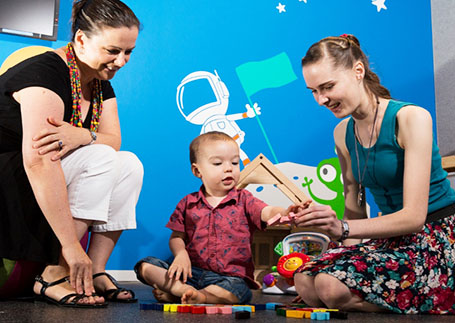Our research
Child language lab research

Interactions at the phonology/morphology interface
One of the classic problems in language acquisition is variability in the production of grammatical morphemes. Our research suggests that much within-speaker variability in morphological production can be understood in terms of prosodic (contextual) constraints, where current findings suggest that grammatical morphemes appear earlier in contexts where they are Prosodically Licensed, pointing to a closer link between the acquisition of phonology and morphology than often assumed. These issues, and their perceptual counterparts (using eye-tracking and brain imaging methods (EEG/MEG)) are currently being explored in various populations (SLI, bilinguals, L2 adults, children with hearing loss), with implications for language processing.
Phonological, morphologial & syntactic generalisation
We have long been interested in how and when children begin to make syntactic generalisations. Some of this research has been carried out in the Bantu language Sesotho,where passives are acquired earlier than in English, due in part to their transparent morphology and high use within the by-phrase. Learners of Sesotho also exhibit generalisation to low-frequency double-object applicatives, where word order is influenced by animacy rather than thematic roles. Recent work on English dative shift and transitive/intransitive alternations also shows early generalisation of new syntactic frames with novel verbs. Current research has extended this to explore issues of morpho-syntactic generalisation as well, both in English (e.g., plural allomorphy) and in Mandarin (tone sandhi rule application).
The nature of the input and implications for learnability
The starting point for much of our research is determining the nature of the input children actually hear. This involves detailed study of infant- and child-directed speech. Armed with this information we can better address the nature of the learnability problem, and how it may influence the course of acquisition. Much of this research examines the nature of the input at different levels of structure (i.e., syntactic, lexical, morphological, segmental, acoustic/phonetic) and makes predictions about the course of development of certain structures crosslinguistically. This is complemented with probabilistic modeling of the learning process (see joint work with Mark Johnson and Titia Benders), in an attempt to discover what types of procedures learners may use in solving the language learning problem.
Content owner: Department of Linguistics Last updated: 12 Mar 2020 11:06am
